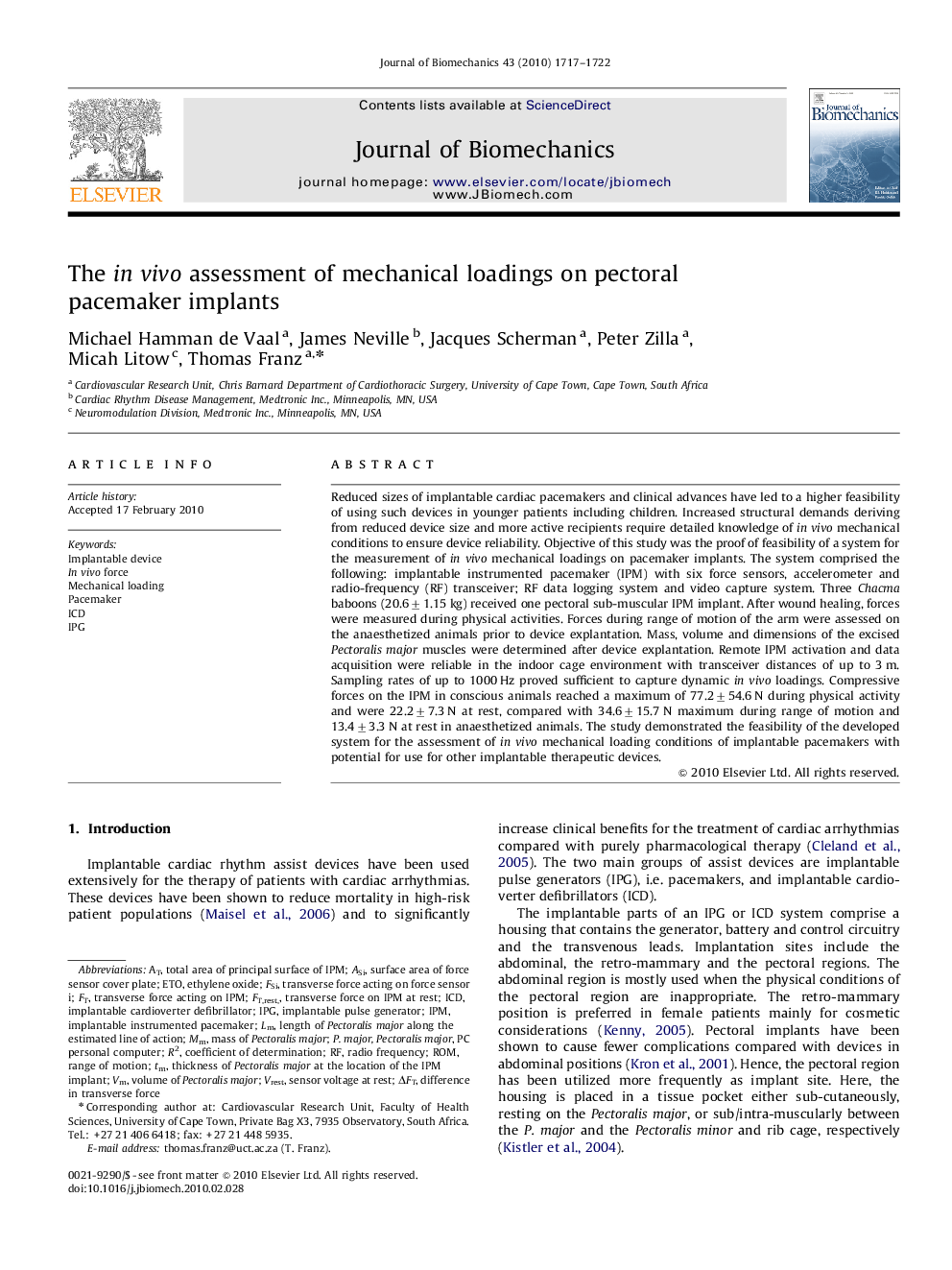| Article ID | Journal | Published Year | Pages | File Type |
|---|---|---|---|---|
| 872969 | Journal of Biomechanics | 2010 | 6 Pages |
Reduced sizes of implantable cardiac pacemakers and clinical advances have led to a higher feasibility of using such devices in younger patients including children. Increased structural demands deriving from reduced device size and more active recipients require detailed knowledge of in vivo mechanical conditions to ensure device reliability. Objective of this study was the proof of feasibility of a system for the measurement of in vivo mechanical loadings on pacemaker implants. The system comprised the following: implantable instrumented pacemaker (IPM) with six force sensors, accelerometer and radio-frequency (RF) transceiver; RF data logging system and video capture system. Three Chacma baboons (20.6±1.15 kg) received one pectoral sub-muscular IPM implant. After wound healing, forces were measured during physical activities. Forces during range of motion of the arm were assessed on the anaesthetized animals prior to device explantation. Mass, volume and dimensions of the excised Pectoralis major muscles were determined after device explantation. Remote IPM activation and data acquisition were reliable in the indoor cage environment with transceiver distances of up to 3 m. Sampling rates of up to 1000 Hz proved sufficient to capture dynamic in vivo loadings. Compressive forces on the IPM in conscious animals reached a maximum of 77.2±54.6 N during physical activity and were 22.2±7.3 N at rest, compared with 34.6±15.7 N maximum during range of motion and 13.4±3.3 N at rest in anaesthetized animals. The study demonstrated the feasibility of the developed system for the assessment of in vivo mechanical loading conditions of implantable pacemakers with potential for use for other implantable therapeutic devices.
